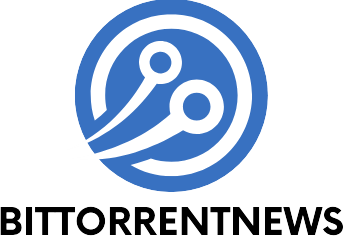Table of Contents
ToggleControl Panel is like the Swiss Army knife of your computer. It’s packed with tools and settings that can make your digital life a whole lot easier. But let’s be honest—navigating it can feel like trying to read a map written in hieroglyphics. Fear not! With a little guidance, anyone can become a Control Panel pro faster than you can say “where’s my mouse?”
Understanding Control Panel
Control Panel serves as a central hub for managing system settings on a computer. Users find it essential for customizing their experience and troubleshooting issues efficiently.
What Is Control Panel?
Control Panel is a built-in application in Windows that provides access to various administrative tools and settings. This interface allows users to modify hardware settings, manage user accounts, and configure network options. Common tasks include adjusting display settings and managing system security. Each selection within Control Panel leads to specific sub-tools, helping users navigate their system effectively.
Importance of Control Panel in Windows
Control Panel plays a critical role in maintaining a Windows operating system. It offers straightforward access to crucial configuration options that enhance performance. System stability and security significantly rely on the settings available in Control Panel. Adjustments made within this application can improve system responsiveness. Learning to use Control Panel can lead to a more personalized and efficient computer experience.
Accessing Control Panel
Accessing Control Panel is straightforward, and multiple methods allow quick entry. Users can choose the method that suits them best.
Different Ways to Open Control Panel
- Search Bar: Type “Control Panel” in the Windows search bar.
- Run Command: Press Windows + R to open the Run dialog, then type “control” and press Enter.
- Settings Menu: Open the Settings app, navigate to “System,” then click “About,” and select “Control Panel” from there.
- Desktop Shortcut: Create a shortcut on the desktop by right-clicking on the desktop, selecting New, then Shortcut, and typing “C:WindowsSystem32control.exe.”
Each of these methods provides immediate access to the Control Panel, enhancing efficiency in managing system settings.
Navigating the Control Panel Interface
Navigating through the Control Panel’s interface is intuitive once familiar. Users find various categories on the main page, such as “System and Security,” “Network and Internet,” and “Hardware and Sound.” Each category leads to specific settings and options.
The search functionality located in the top right corner simplifies finding specific settings. By typing in keywords, users can quickly locate the desired tools. Options within each category also feature descriptive titles, making it easy to understand their purpose.
Utilizing these navigational aids enhances the experience of managing settings, ensuring users can efficiently customize their computers for optimal performance.
Essential Control Panel Settings
Utilizing the Control Panel effectively optimizes system performance and security. Understanding key categories enhances user experience and offers straightforward navigation through essential settings.
System and Security
System and Security settings provide vital tools for maintaining system health. Here, users can manage Windows firewall settings, configure backup options, and view system updates. Accessing these tools ensures protection from threats and streamlines system performance. Users can also find tools for user account management and administrative tasks that safeguard personal data. Regularly reviewing these options helps in addressing security vulnerabilities and optimizing overall functionality.
Network and Internet
Network and Internet settings play a critical role in managing connectivity. In this section, users can configure network settings, manage Wi-Fi connections, and set up VPNs. Adjusting adapter settings allows users to troubleshoot and enhance their Internet performance. Understanding these settings ensures seamless online experiences and efficient resource sharing. Additionally, options for monitoring data usage assist users in managing their Internet subscriptions effectively.
Hardware and Sound
Hardware and Sound settings facilitate efficient management of device functionalities. In this area, users can modify printer settings, manage audio devices, and adjust power options. Optimizing these settings results in better audio quality and efficient device performance. Users can also troubleshoot hardware issues, ensuring all connected devices operate smoothly. Taking time to familiarize with these settings improves device management and enhances user interaction.
Programs
Programs settings are essential for managing software on a computer. Users can uninstall or modify installed applications, streamlining the software experience. Accessing default programs allows for easy customization of file associations, tailoring interactions based on personal preferences. Keeping programs updated enhances system security and ensures access to the latest features. Familiarity with these settings increases efficiency and improves overall user satisfaction.
Customizing Control Panel Settings
Customizing Control Panel settings enhances user experience with tailored configurations. Users can adjust their settings to fit personal preferences and needs.
Creating a Custom Control Panel Layout
Creating a custom layout starts by accessing the Control Panel and selecting the “View by” option. Users can choose between “Large icons” or “Small icons” for a more organized view. Adding frequently used settings to the main interface simplifies navigation. Users can create shortcuts by dragging icons to the desktop, facilitating quicker access. Customization options allow users to prioritize frequently accessed settings, streamlining efficiency. Organizing these options can significantly improve productivity, enabling users to focus on essential tasks without unnecessary distractions.
Adding or Removing Features
Adding or removing features within the Control Panel improves system functionality. Users can access “Programs” and select “Turn Windows features on or off” to modify installed features. This interface showcases options like Media Features and .NET Framework, which can be adjusted based on necessity. Removing unnecessary features frees up system resources, contributing to enhanced performance. Users may also find benefits in adding specific features, depending on their work requirements or personal interests. Managing features effectively serves as a way to optimize overall system efficiency.
Troubleshooting Common Issues
Users may encounter specific challenges while using the Control Panel. Addressing these issues quickly enhances the overall experience.
Resolving Access Problems
Access problems frequently occur due to user account permissions or system settings. Users should ensure they’re logged in with an administrator account. Additionally, checking for Windows updates often resolves access-related issues. If the Control Panel doesn’t open, using the search bar to manually enter “Control Panel” may help. Restarting the computer could also refresh system settings. If problems persist, consider running the System File Checker to repair any corrupted files that may hinder access.
Fixing Control Panel Glitches
Glitches can disrupt the smooth functionality of the Control Panel. Users experiencing slow loading times should consider clearing temporary files using Disk Cleanup. This action often enhances performance and responsiveness. If specific settings fail to load, restarting the Control Panel application may resolve the issue. Creating a new user profile can also eliminate persistent glitches. In cases where settings remain unresponsive, executing a Windows Troubleshooter specifically designed for program issues is beneficial. Regularly maintaining and updating Windows can also prevent future glitches.
Conclusion
Mastering the Control Panel can significantly enhance a user’s experience with their Windows operating system. By understanding its various settings and functions, users can tailor their computers to meet personal needs and preferences. Regularly accessing the Control Panel not only aids in troubleshooting but also ensures optimal performance and security.
With the right approach to customization and maintenance, the Control Panel becomes an invaluable resource. Users can navigate its features confidently, making informed decisions that lead to a more efficient and enjoyable computing experience. Embracing this tool empowers users to take control of their systems, paving the way for a smoother digital journey.



